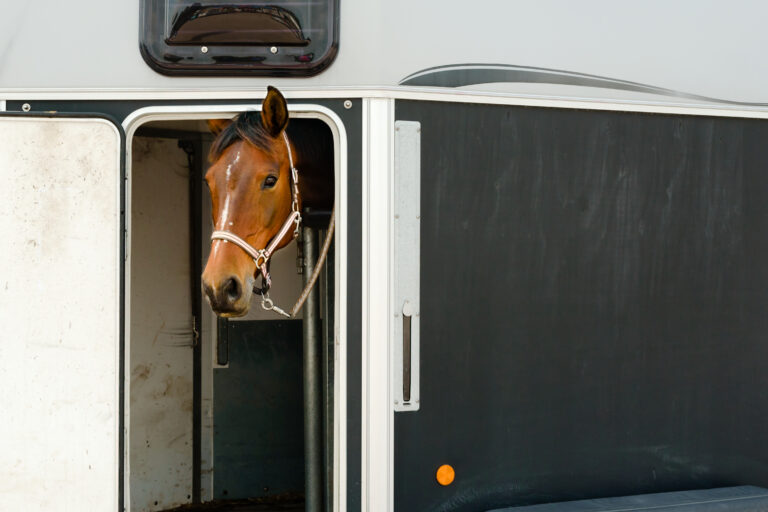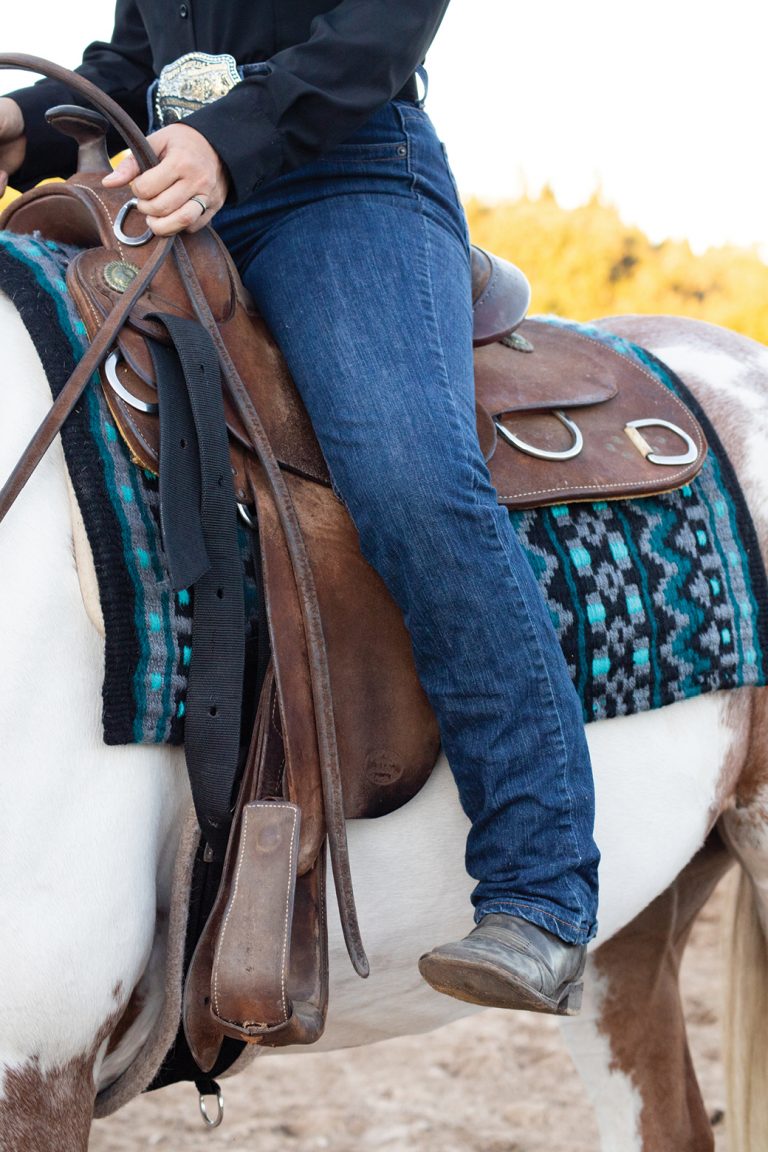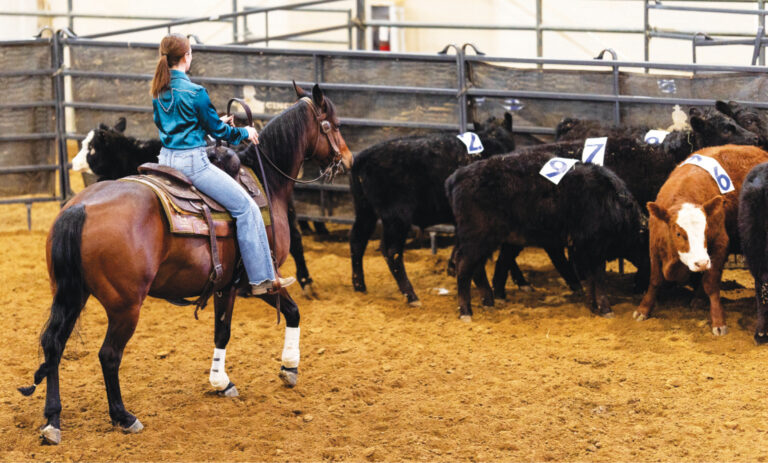
Your horse can be the compass that points you in the right direction for better mental health. Using the guiding principles of Gestalt, along with some horsemanship knowledge, we can experience how horses model stable mental and emotional health. If we follow their example, we can become more in balance mentally and emotionally.
What is Gestalt and why is it a guide to good mental health?
Gestalt is a therapeutic modality from the humanistic arm of psychology, meaning it values the uniqueness of each person’s experience in life. As an approach to good mental health, Gestalt always seeks to connect the pieces of a person’s life — mind, body, emotions, and spirituality — in a way that flows that person toward unity and alignment. “I appreciate that Gestalt is a non diagnostic model seeing clients as capable and resourceful,” says Melisa Pearce, founder of the Equine Gestalt Coaching Method.
Horses live their lives as embodied Gestaltists.
Living in alignment is what we are all ideally striving toward because it allows us to be our true and authentic selves.
Let’s explore an example. As humans, we often find our values challenged by the world around us and our relationships. You may value freedom as your most driving force. Yet, the people and influences around you, may place the higher value on the safety and security money provides. Because of that influence, you may find yourself in a high-paying, but also very demanding, job. At the end of the day, you may experience frustration, anxiety, and unhappiness because you are not living in your own authenticity. If you change to a job that provides more freedom — say a career working with the horses you love being with — even if the money is not as great, you find a deeper happiness.
Horses simply can’t be anything but their authentic selves. Even when we task them with cues and obstacles, they show up as who they are. Witness a horse experiencing a new object in their paddock or on their ride — they show their apprehension or curiosity clearly. They respond with their whole being and in their own unique truth. This is because horses don’t lie — to others or to themselves — about who they are in a given situation.
This way of being, living in the wholeness of truth and experience, is the embodiment of Gestalt. Following are three ways that horses embody Gestalt practices that we can learn from and embrace to experience life in a more joyful and less stressful way.
Horses know how to live in the present.
Part of being an embodied Gestaltist — and good mental health — is learning to live in the present moment. Humans tend to live three timelines all at once: the past, the present, and the future. That adds up to a lot of stress.
Horses only live their present life. They don’t worry about the future or dwell on the past. Yes, they react to situations that have caused them fear or discomfort in the past, but they do not dwell on that feeling when the situation is no longer present. For example, a horse doesn’t worry about being caught with a halter and lead rope unless a halter and lead rope are present. This is why your hard-to-catch horse is frequently easy to approach in the pasture when you don’t carry anything in your hands.
Present moment awareness is something horses model for us all the time. It is also where we most likely have experienced the benefit of the lesson without even knowing what was happening. Think of one of your best rides — whether it be on the trail or in the show pen. I’ll bet if you go back to the circumstances around that ride, you’ll find that you were keenly and fully present with your horse — not worried about what was happening elsewhere in your life or what might happen in the future. That present moment beingness allowed you and your horse to communicate with clarity and oneness as you moved through the experience one moment at a time.
Horses don’t carry around unfinished business.
If you see two herd mares go at each other in the pasture, ears pinned, teeth bared, it’s a scary sight. If you’ve been around horses in a pasture for any length of time, however, you’ll note that those two mares will likely be grazing together later that day, in total peace.
For humans, who hold grudges and don’t always say what we are really feeling, unfinished business can become a heavy weight we drag with us as we go through our day. This weight can pull us down into depression and avoidance of people and situations that should bring us pleasure and happiness.
It doesn’t have to be that way.
Back in the pasture, those mares have had their argument, said, in their own horse way, their piece, came to an agreement and finished the business at hand to completion. They aren’t worried about being with each other, plotting avoidance, or gossiping with the other mares about how angry they are with the other. They have found peace and have moved on. We can, too, if we concentrate on tying up those loose ends we’ve been tripping over.
Horses release energy that no longer serves them.
Every being on this planet encounters stress. Horses are no different, but horses know how to expertly release their stress, whereas humans tend to hold onto their stress in their minds, emotions, and bodies.
The amazing thing about horses is that not only release stress for themselves, they do it for us.
An Equine Gestalt practitioner can tell when a horse releases stress from a client very clearly. The horse displays what founder of the Equine Gestalt Coaching Method, Melisa Pearce, has termed “leeching.” Leeching is the wide opening of the mouth, repeatedly, sometimes accompanied with the closing of the eyes and even slight shaking of the head. Leeching is distinct from yawning in that it is often repeated and demonstrates a purposeful and intentional pattern.
Horses not only leech around people in an effort to release stress from the person, they do it for each other in the herd. Horses don’t need big stressors to leech for each other — it is a daily maintenance activity among the herd. Wild mustangs in a sanctuary setting can be witnessed in groups leeching near each other after the herd has experienced being moved from one location to another. You may have seen this same behavior in your own herd from time to time.
A shoulder to lean on.
Think about how you may have let stress build up in your body and mind — and how your body and mind respond by becoming tense, anxious, and uncomfortable. Stress release helps dissipate this negativity before it can cause long-term damage to your body’s system.Your horse is there to lend you their support. And if you allow them, they will happily help you release the stress you have been carrying around. All you need to do is show up with an open heart and allow your horse to work their magic.
To help you engage with your horse in a healing capacity, Pearce has created a hyper grounding method. “Often we are so busy and rushing with an agenda when with our horses. Allow your horses to fully connect with you by grounding yourself.” This is easiest if you find a small quiet place where your horse can be at liberty. Such as a round pen or paddock. Stand in the middle of the pen, quiet your mind, feel into the ground beneath you, and be present with everything around you in the moment. As you do this for a period from 10-20 minutes, observe your horse. Does your horse come close to you and stand with their body at a certain angle? Do they sniff you or nudge you? Have you noticed they perform leeching behavior? Do they roll or lie down? All of these are telling behaviors as to YOUR mental and emotional state. Ask yourself, does your presence in your horse’s energy field create a lighter feeling to your body, mind, or heart? Allow your horse to show you how to clear the stress you’ve been carrying.
People who live in proximity with horses frequently report how being with their horses causes them to “feel better.” Being mindful about how and why this happens will open up new avenues to partner with your horse for a happier life. “All my life Horses have been my most trusted partners and confidants. If you open yourself up to the possibilities, they can become the same for you, too,” says Pearce.
Learn more.
If you’d like to learn more about Equine Gestalt and Equine Facilitation, visit the TouchedbyaHorse.com website. You’ll find information on certifications and licensing programs that will help you build a successful career in partnership with your horses as well as access to Equine Gestaltists and Equine Facilitators around the world.




